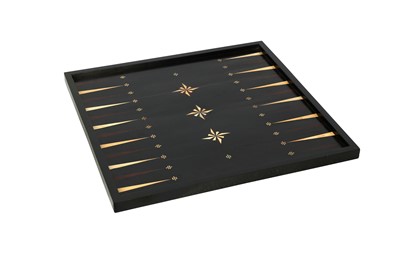16th Jul, 2021 14:00
Islamic & Indian Art
λ A FINE EBONY AND IVORY-INLAID GAMING BOARD
Possibly Nasrid Spain, 14th - 15th century
λ A FINE EBONY AND IVORY-INLAID GAMING BOARD
Possibly Nasrid Spain, 14th - 15th century
Of square shape, with raised edges, both sides inlaid with ivory and coloured wood tesserae on ebony, designed as a backgammon (nard) board on one side with ivory and light wood alternating points and chequered dots, with geometric stellar motifs in the centre, on the other side a plain chessboard within thin white rules, 38cm x 39cm.
The history of chess can be traced back nearly 1500 years, even if the earliest origins of this game remain uncertain. It is believed that the earliest form of chess originated in India around the 7th century, and it was later introduced into Al-Andalus via Persia in the 9th century. From the Iberian Peninsula, the game spread into the Western territories and courts, and it kept on evolving until it reached its current form approximately in the 15th century, having by then become one of the favourite pastimes of European rulers. The micro-mosaic work on this board is incredibly similar to examples of the Nasrid period produced in Spain, with ivory imported from Fatimid Egypt and coloured woods from the Iberian Peninsula. For an almost identical example, attributed to 14th-century Nasrid Spain but featuring a negative chromatic scheme, please see Sotheby's London, 7 October 2015, lot 322; and for a comparable gaming board, see Sotheby's London, 24 October 2007, lot 158.
This item may require Export or CITES licences in order to leave the UK or the European Union. It is the buyer's responsibility to ensure that lots have the relevant licences before shipping.
Sold for £5,500
Includes Buyer's Premium
Do you have an item similar to the item above? If so please click the link below to submit a free online valuation request through our website.






